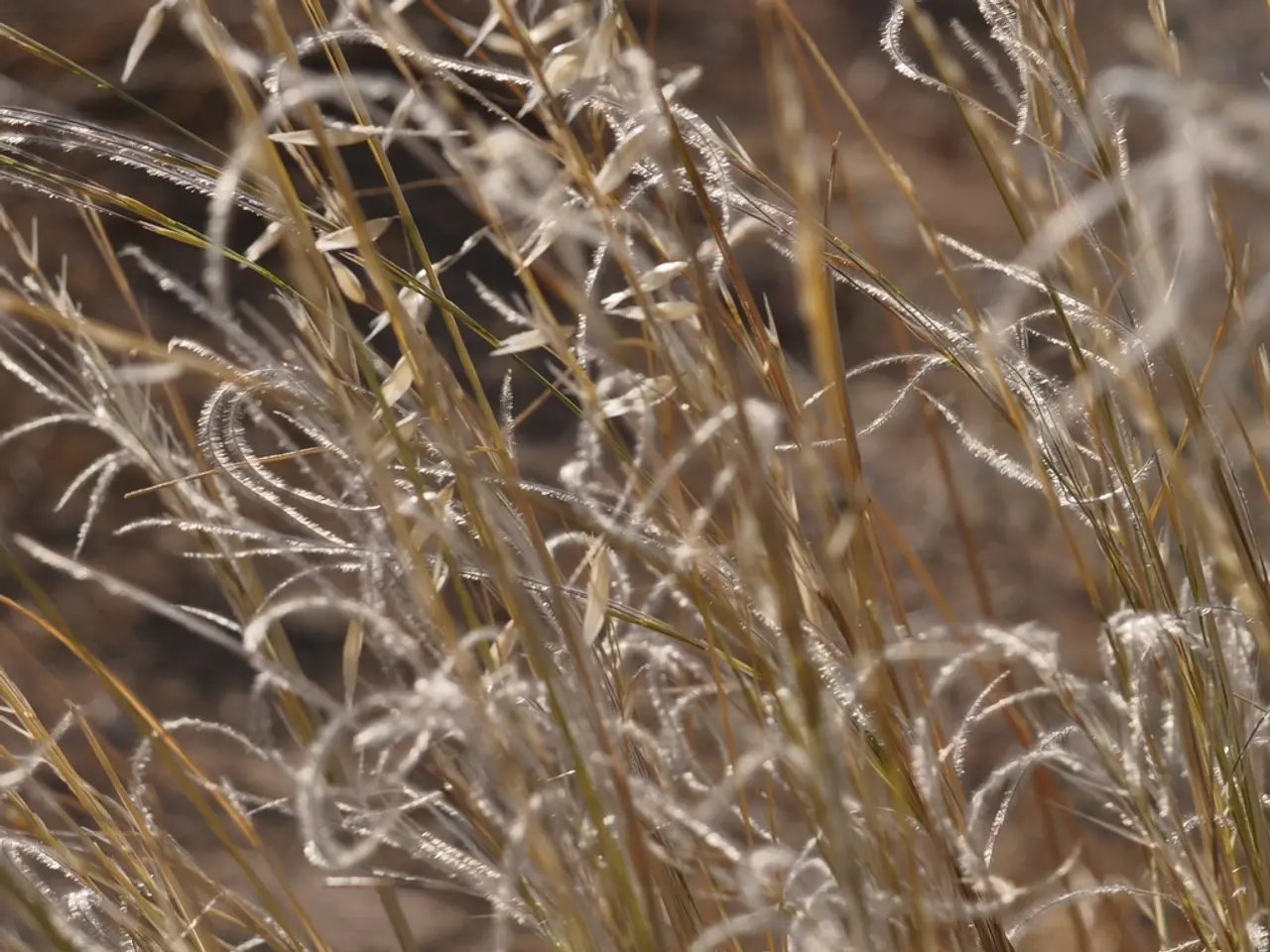Optimal Time for Turf Installation: A Year-Round Possibility, but Experts Suggest Peak Performance at Specific Points
Laying Turf: A Guide for the Perfect Lawn
Laying turf is a popular choice for creating a lush, green lawn, but it's essential to do it at the right time for optimal results. Here's a comprehensive guide on laying turf, based on advice from industry experts.
Firstly, the turf comes in 1m2 rolls and is available in multi-packs depending on the quantity needed. It's important to remember that turf should be laid as soon as it arrives, as it is harvested to order and is as fresh as possible when it arrives.
Experts agree that spring and autumn are the best times of the year to lay turf. Graham Smith MCIHort from LBS Horticulture recommends March or April (spring) and September or October (autumn) as the best months. During these seasons, soil temperatures remain warm enough to promote quick root growth, yet air temperatures are cooler, reducing stress on the turf.
September, specifically, is widely regarded as the optimal period for laying turf. Soil temperatures are still warm, moisture is usually adequate, and cooler air temperatures reduce turf stress, promoting healthier establishment. Consistent rainfall in autumn helps keep the soil moist, which supports turf establishment. This combination of warm soil and moist conditions allows newly laid turf to root quickly, often enabling light walking on it within 2-3 weeks.
While spring can work well, it may face greater heat stress and less consistent rainfall compared to autumn. David Hedges-Gower, the chairman of the Lawn Association, states that while summer is not the best time to lay turf, it is still an option, and may require additional watering.
When laying turf, it's crucial to prepare the soil correctly. Jane Fairlie, technical development manager at Doff Portland, advises checking the soil condition before laying turf, ensuring it is well-drained and not waterlogged or frozen. She also suggests applying a general-purpose fertilizer 4 - 7 days before laying turf in February.
Laying planks of wood on the ground can prevent soil compaction and keep the turf level. If heavy rain, snow, or freezing conditions are forecast in February, it's best to wait until things warm up before laying turf. In winter, turf takes longer to root because it's in a dormant state, and you should expect several weeks for the roots to establish properly.
During summer, it's advisable to lay turf on a mild day with overcast weather to help it settle in better. Jane Fairlie also suggests protecting turf with a layer of horticultural fleece during severe frosts, and to remove it once the frost risk has passed to avoid condensation buildup and potential diseases.
It's essential to avoid laying turf during periods of drought or high temperatures, as the lawn will need a lot of additional watering. Similarly, avoid laying turf in heavy rain or snow, and on waterlogged soil.
The turf available is harvested from a blend of fescue and ryegrass, creating a hardy and resilient lawn. However, if you're interested in the more affordable option of growing grass from seed, consider checking out our guide on how to sow grass seed.
Laying turf is a more costly option compared to growing from seed, as mentioned by Peter Chaloner, Managing Director of Cobra. But with the right timing, preparation, and care, you can achieve a beautiful, lush lawn that will be the envy of your neighbours.
Remember, laying turf at the wrong time can cause it to fail to establish, and you may need to repeat the process. By following this guide, you'll be well on your way to a perfect lawn. Happy turfing!
[1] Smith, G. (2021). The Best Time to Lay Turf. LBS Horticulture. [Online] Available at: https://lbs-horticulture.co.uk/blog/the-best-time-to-lay-turf/
[2] Fairlie, J. (2021). The Ideal Time to Lay Turf. Doff Portland. [Online] Available at: https://www.doffportland.co.uk/ideal-time-to-lay-turf/
[3] Chaloner, P. (2021). The Cost of Laying Turf vs Growing from Seed. Cobra. [Online] Available at: https://www.cobragarden.co.uk/the-cost-of-laying-turf-vs-growing-from-seed/
[4] Hedges-Gower, D. (2021). Can You Lay Turf in Summer? Lawn Association. [Online] Available at: https://www.lawnassociation.co.uk/can-you-lay-turf-in-summer/
- To create a perfect home-and-garden lifestyle, consider using tools such as a guide for laying turf to ensure a lush, green lawn.
- When preparing the soil for laying turf extension, remember to check the condition, ensuring it is well-drained and not waterlogged or frozen.
- For best results, consider laying turf during specific times such as spring (March or April) or autumn (September or October), as these seasons promote quick root growth and reduce stress on turf.
- To maintain your newly established lawn, refer to home-and-garden guides for tips on watering the turf during summer or protecting it from frost and drought conditions.




